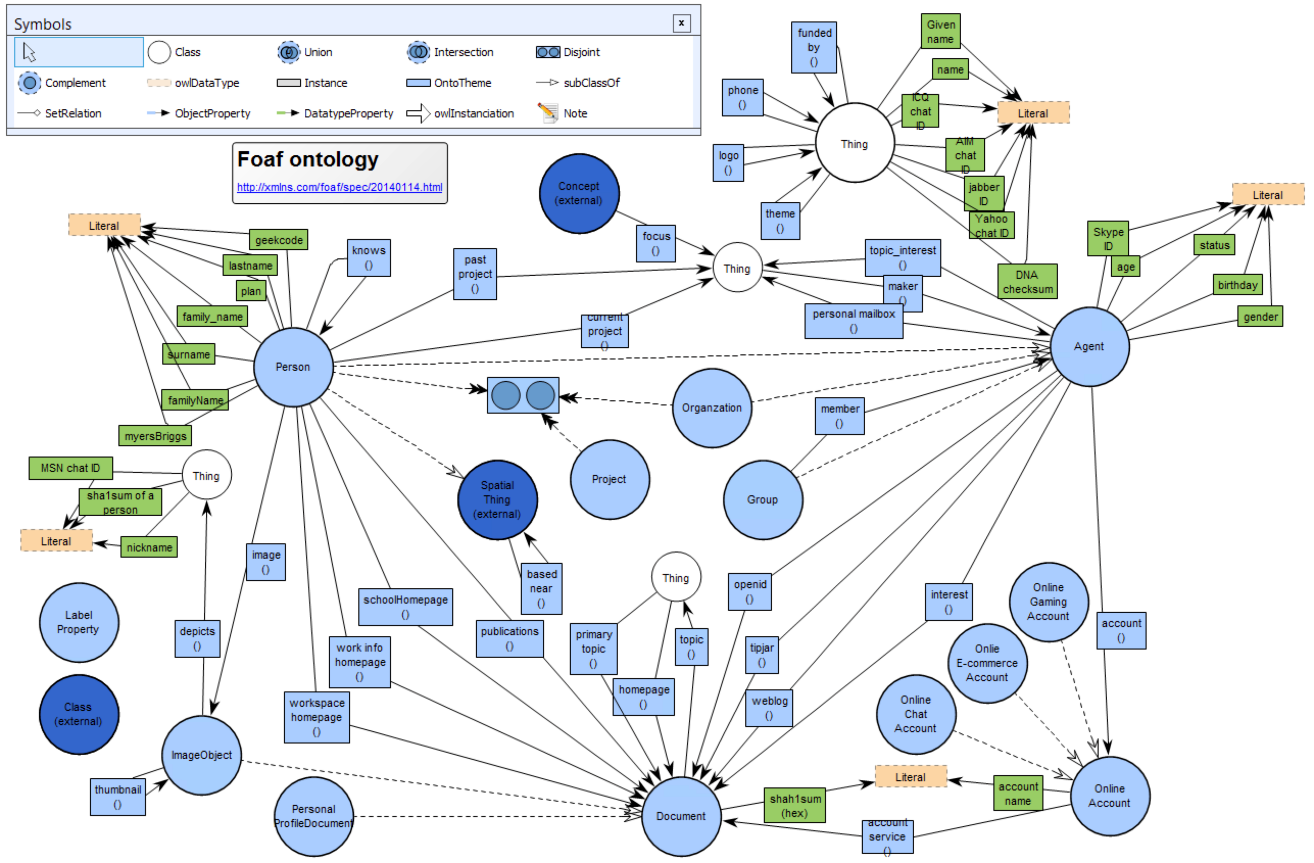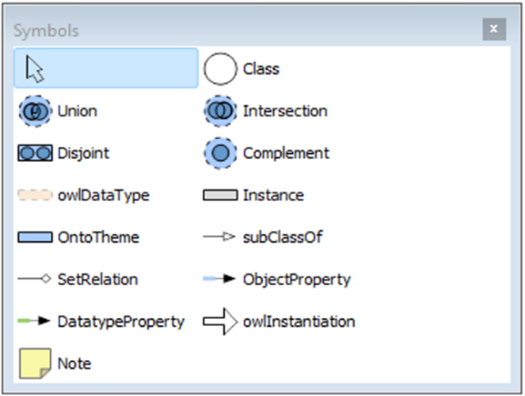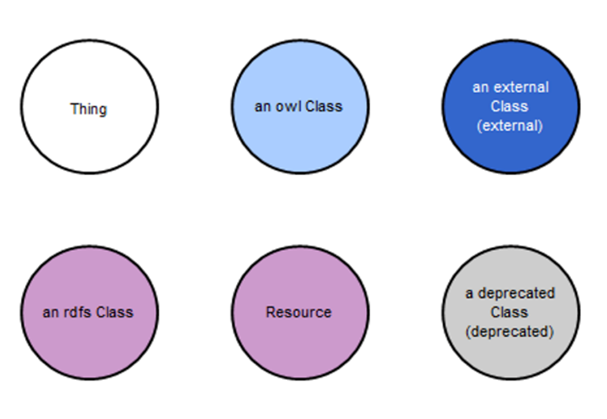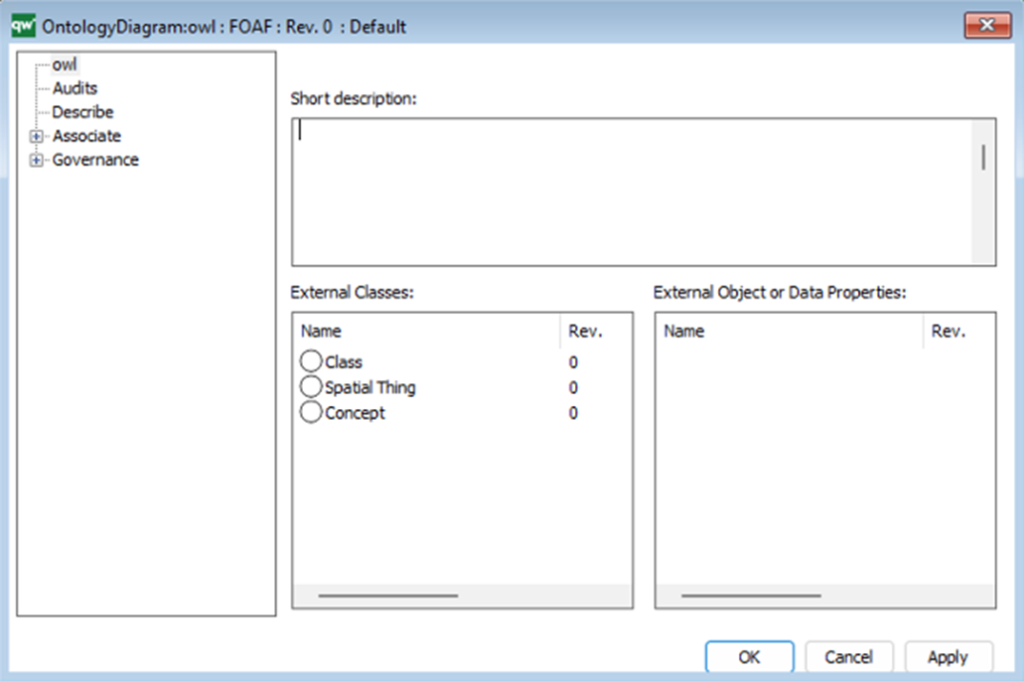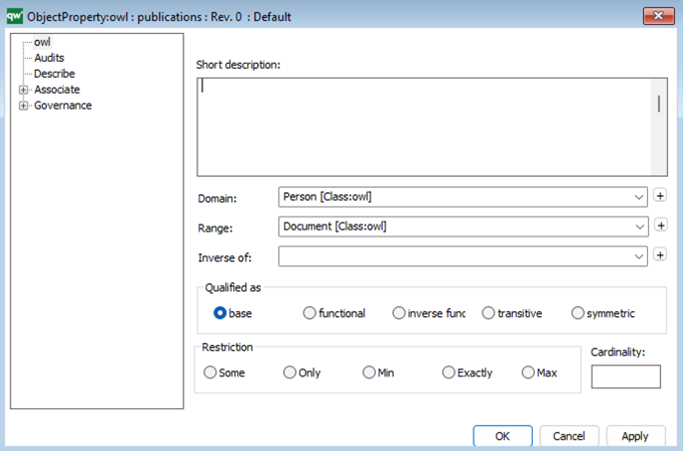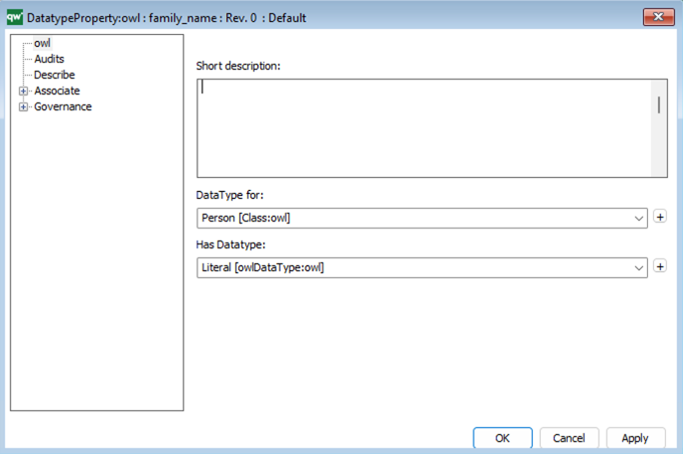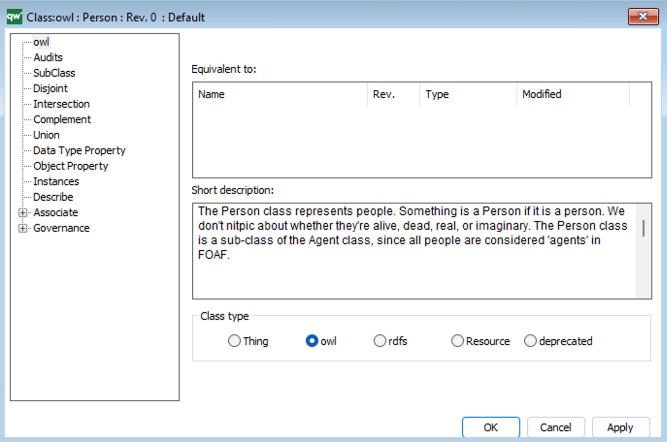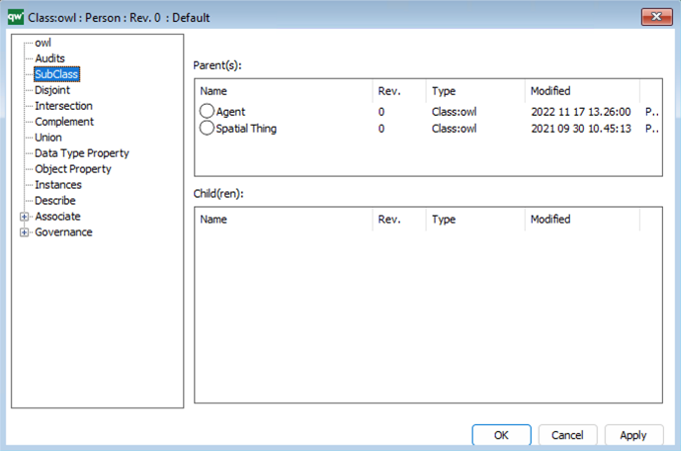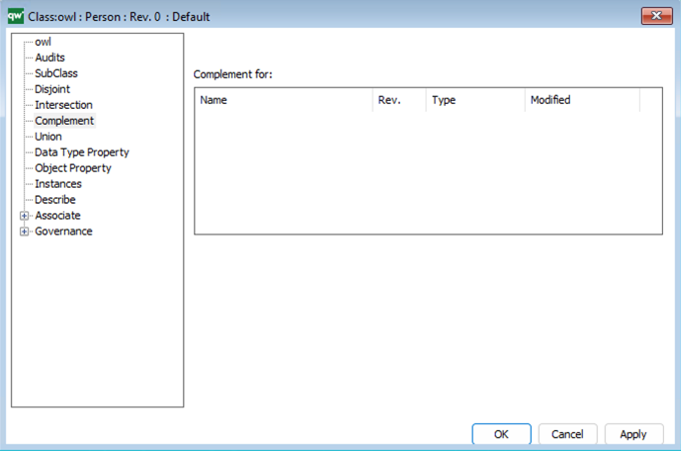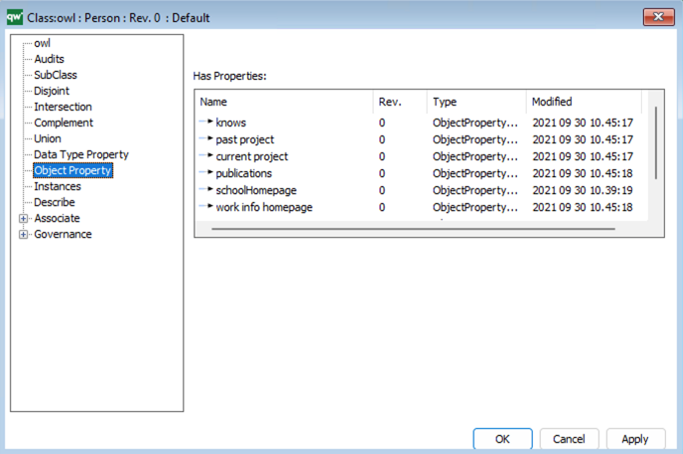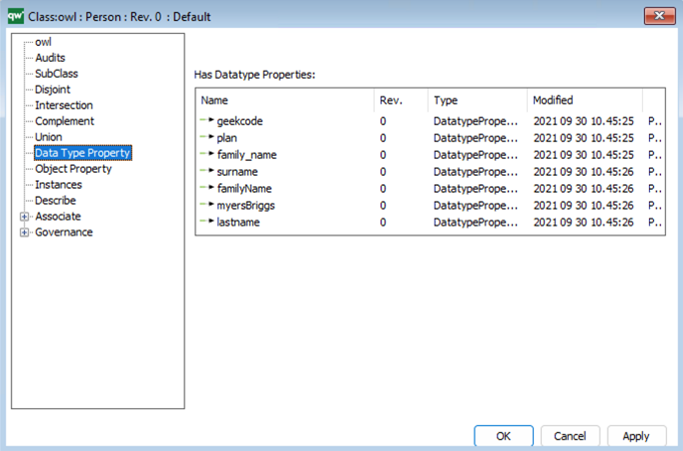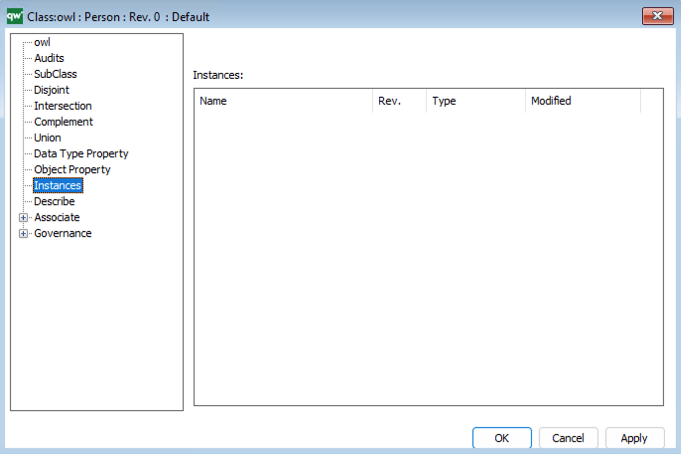The ontology Annotations
Annotations are used to associate information with ontologies. These provide meaningful definitions to the ontology.
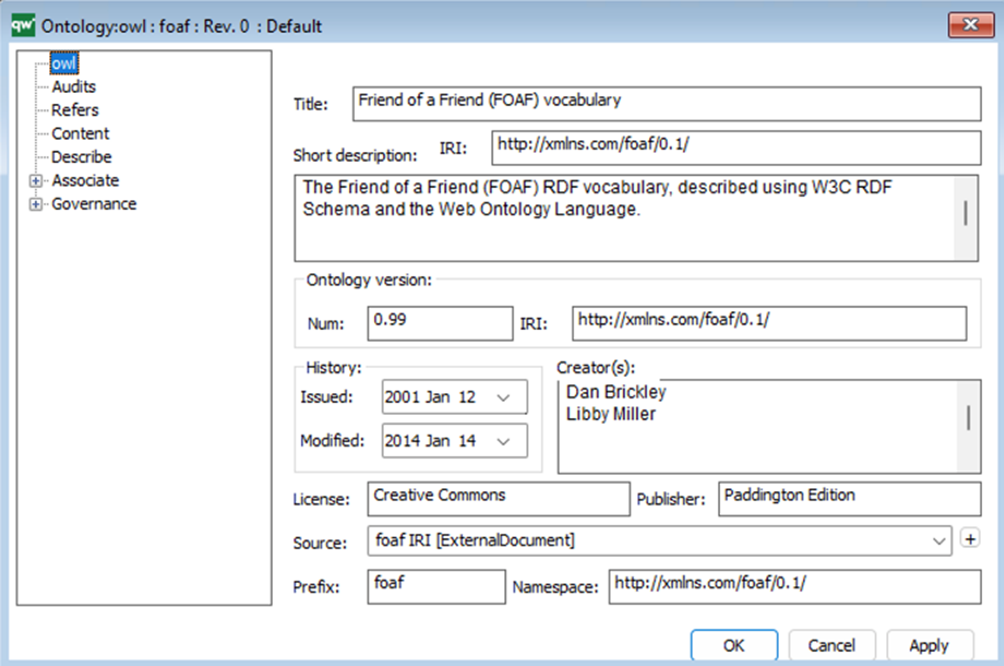
An ontology is defined and described with:
- A Name (here “foaf”)
- A Title
- An IRI (Internationalized Resource Indicator) which points to its documentation on the web
- A Short description
- A Version number and its pointer to the file describing it (Version IRI)
- Some History dates (first issued, and last modified)
- Creators (names of its creator(s))
- A License reference and its Publisher
- Its Source (the target to its definition)
- A Prefix
A Namespace definition
The “Prefix” is used as the reference to the described ontology, when its defined classes are referenced from another ontology. In the referring ontology the referenced classes appear as prefixed with this term. Supposing an ontology referencing “Person” (as defined in FOAF), this class will be prefixed as “foaf:Person” explicating that in the context of this ontology, “Person” must be understood as defined in FOAF.
An ontology refers
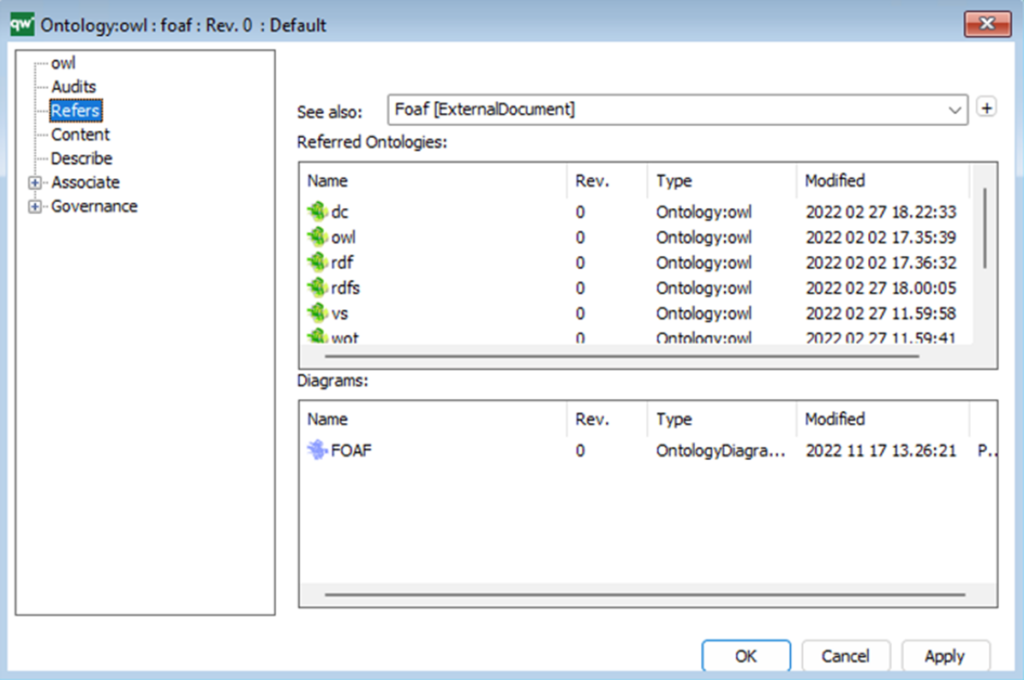
An ontology refers:
- Possibly an external document (See also)
- Referred ontologies (used for defining the prefixes used to refer to these ontologies)
Diagrams (one or more diagrams presenting graphically the ontology)
Diagrams are based on the OntologyDiagram:owl template (see below in the “OntologyDiagram” paragraph).
An ontology is described with content
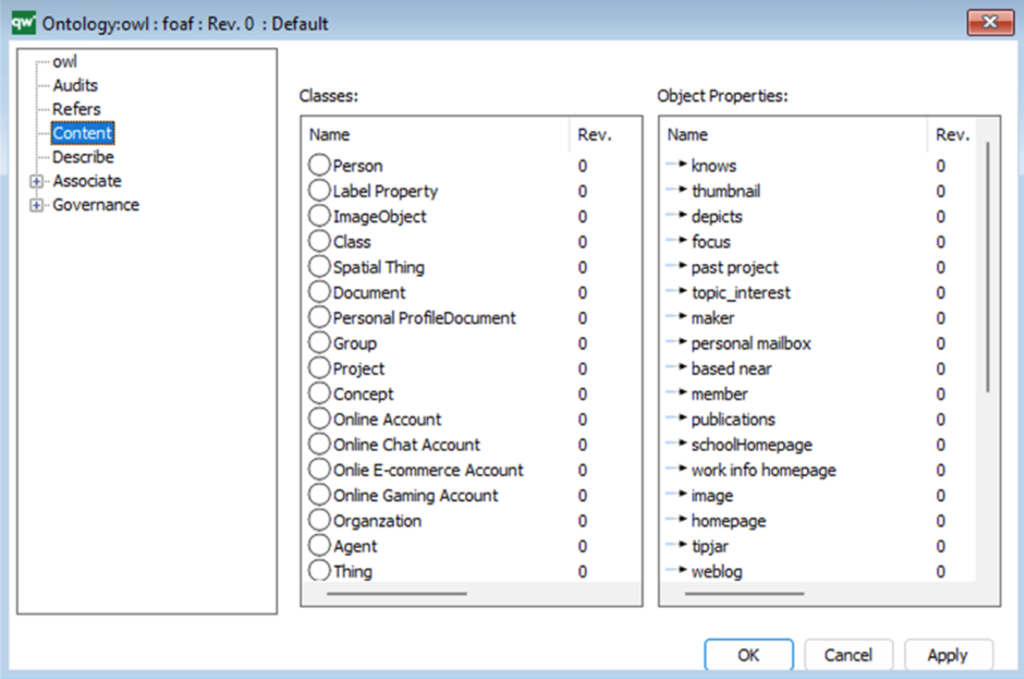
An ontology contains (is described with) :
- Classes (these are the Class:owl instances which appear in the Ontology Diagram)
Object Properties (these are the ObjectProperty:owl instances which appear in the Ontology Diagram)
These two fields are automatically filled at close of the Ontology Diagram which is referred to by the Ontology.
The ontology detailed Description
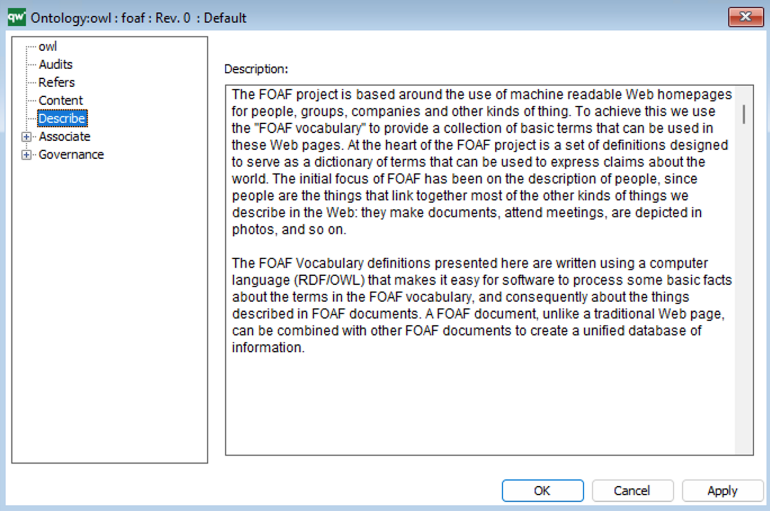
An ontology has a detailed description
Note
These Annotation fields described above are edited by the ontology engineer when creating his/her ontology.
The ontology example (FOAF) we use to show these Annotations populated with content is an “up level” ontology and is published on the web.
Loading automatically these published ontologies makes sense. We used a semi-automatic way to load it.
Currently there is no fully automated load of ontology source document. We are working on it and will deliver this automatic load soon.
